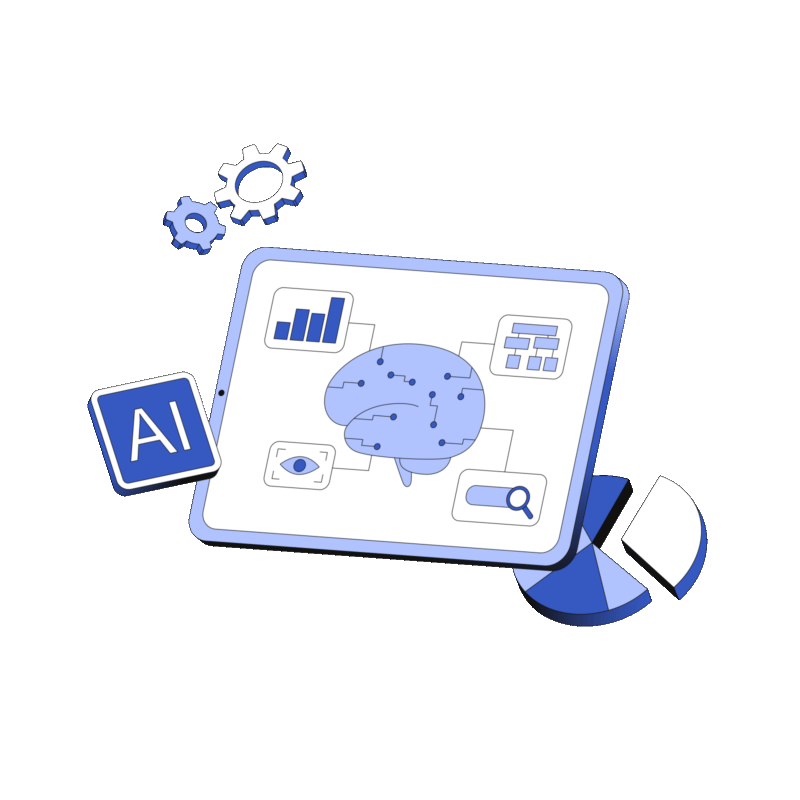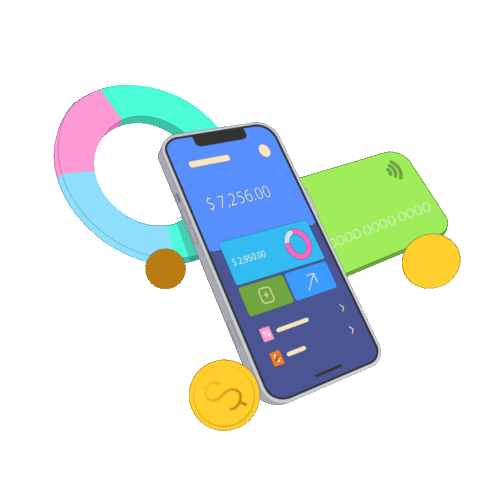Mobile Application Development
Building excellent mobile experiences that keep your customers happy and employees productive

Mobile Application Development
Mobile app development involves designing, creating, testing, and launching software applications for mobile devices such as smartphones, tablets and wearable devices for enhanced customer engagement and brand visibility. Custom mobile apps are tailor-made mobile applications created to address the requirements of a specific audience rather than a massive group of people. Custom mobile app development provides the functionality and features that non-specific off-the-shelf solutions cannot
ADVANTAGES OF CUSTOM-MADE MOBILE APPLICATIONS
#1 Full control over app development and maintenance
#2 Easy to emphasize the competitors advantages
#3 Scalability to meet growing business needs and incorporate new features
#4 Access to app-native technology boosts speed and perfomance
#5 Seamless integration with third-party software
#6 High-level of app support maintenance from the vendors side
#7 Data security and protection against cyber attacks
Selecting the Mobile Development Platforms
| Aspect | Android | iOS | Hybrid |
|---|---|---|---|
| Development Language | Java, Kotlin | Swift, Objective-C | JavaScript, HTML, CSS |
| Development Environment | Android Studio | Xcode | Various Frameworks |
| User Base | Larger global market share | Wealthier and engaged users | Combined user base |
| Development Cost | Moderate | Higher | Lower |
| Development Time | Moderate | Faster | Faster |
| App Review Process | Less stringent | Strict | Less stringent |
| Hardware Fragmentation | Varied device types | Limited device models | Varied device types |
| Native Features Accessibility | Extensive access | Full access | Limited access |
| UI/UX Customization | More flexibility | Strict design guidelines | Moderate flexibility |
| Performance | May vary due to fragmentation | Consistent performance | Moderate performance |
| Monetization Options | Ad revenue, in-app purchases | In-app purchases | Ad revenue, in-app purchases |
| Market Deployment Time | Shorter release cycle | Longer release cycle | Moderate release cycle |
| Target Audience | Diverse audience | Affluent, engaged users | Broad audience |
| Ecosystem Integration | Google Services | Apple Ecosystem | Limited ecosystem |
| Developer Community Support | Strong | Strong | Growing |
| Maintenance and Updates | Frequent updates required | Easier to manage updates | Moderate update process |
| Security | Open system, potentially more vulnerable | Closed system, more secure | Moderate security |
| Cross-Platform Compatibility | Limited | Limited | High |

Different Mobile Applications
There are four common types of mobile applications developed by businesses worldwide.
#1 Native Mobile Applications: Platform-specific applications developed using the programming languages. SDKs tools, and frameworks provided by the platform itself. These apps are designed to run natively on the operating system of the device such as iOS or Android Native mobile apps are faster more reliable and offer offline capabilities.
#2 Hybrid Mobile Applications: Hybrid mobile applications are built using standard web technolgies such as JavaScript, CSS or HTML5, combining the elements of both native as well as web applications. Developers can leverage plugins and APIs to integrate web technology with native app features. Hybrid mobile apps are faster to develop and easier to maintain.
#3 Cross-Platform Mobile Applications: This type of app works across platforms using a single code base which makes it compatible to run on different operating systems. A cross-platform app can be written using different programming languages but it's complied to run like a true native application running directly on the device's OS its easy to build and maintain cross-platform apps.
#4 Progressive Web Applications: PWA's present an alternative approach to traditional mobile app development by avoiding the need for app store delivery and installations. They are cheaper more secure, faster, and easier to develop. They operate via a browser but act like native apps and provide users an "app-like" experience by leveraging browser capabilities.

Scalable Mobile App Infrastructure
A scalable mobile application has the ability to accommodate the growing number of users quickly and manage the increasing workloads. Here are some considerations while building a scalable architecture for your mobile app.
Mobile App Dimensions: Fitting the screen size of preferred devices, Dots per inch (DPI), etc.
Quality of Internet: Availability of internet connection whether users have access to 6G/5G or they still use 4G/3G.
Creative and Minimal UI: UI helps users browse through various elements on the display.
Gesture-based navigation, single view or stacked navigation bar: It is for conevnience and comfort of users.
Database selection: It divides data between multiple databases to reduce fatal impact in the case of failure and permission for easy archiving to reduce storage-related performance issues.
Type of scaling: Vertical scaling(scaling up) to develop the app's ability to handle swelling loads or Horizontal scaling(scaling out) to avoid over loading a single machine.
Content Delivery Network(CDN): CDN to speed up the delivery of content and improve response time if your users are distributed across countries.
Cache: Caching to reduce the system resource load by delivering ready-made results.
Robust DevOps Automation: A robust DevOps automation platform to lower the complexity of deploying, maintaining, and monitoring your mobile app by enabling task automation.

Approach to Mobile App Development
Raphus mobile application development process takes into account the unique app requirements of your business, platform and OS specifications, adoption of scalable tools, technologies, and trends, in-app security, compliance, and other critical factors that make your app fully functional and responsive. Key stages of Mobile app development from ideation to post-launch monitoring.
#1 Ideate: Define the app idea by analyzing the demographics, motivations, expectations, and behavior patterns of the potential app users.
#2 Assess Feasibility: Assess the technical feasibility strategies and ideas for developing and launching a mobile application.
#3Wireframe: Wireframing(detailed sketching) of the envisioned app to refine the idea and organize all the essential components.
#4Prototype: Create working prototypes and mockups of the application for stakeholders to share their feedback and suggest changes.
#5 Design: Create multiple variations of the app screens to get a clear direction for visualizing the final product.
#6 Develop: Core phase of the application development process, where the actual development takes place
#7 Test: End-to-end testing of the mobile app for validating user acceptance, performance, load balancing, UX and QA.
#8 Launch: Publish the mobile app to the app store or launch it internally within the organization.
#9 Support: Provide ongoing support and plan regular app maintenace to fix bugs and enhance user experience
Crafting the Future, One App at a Time
Innovative mobile solutions that empower your business on the go.
Connect with Experts